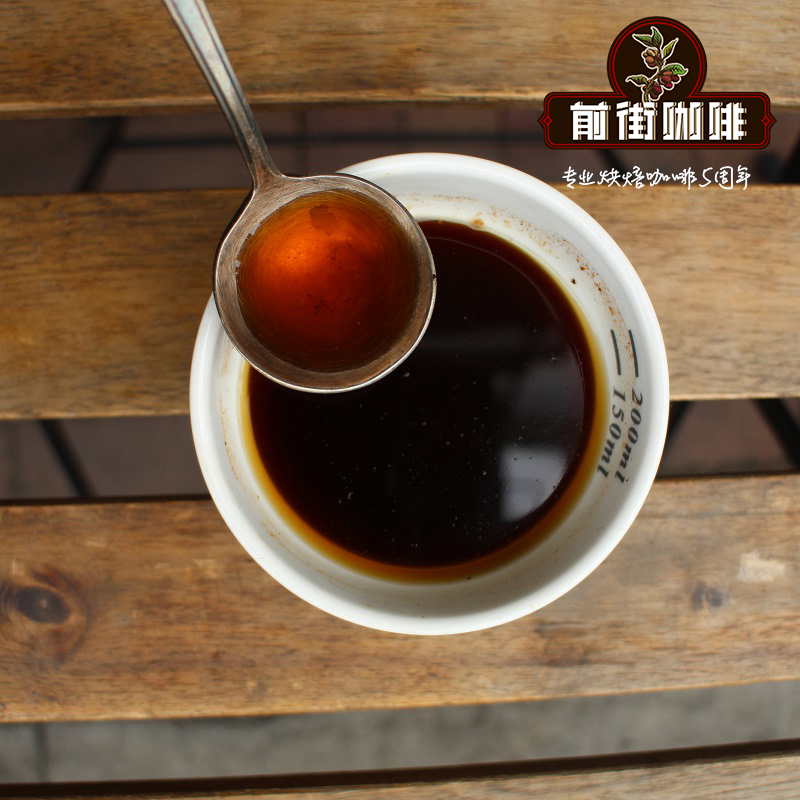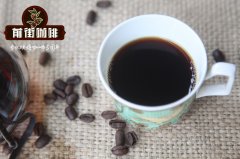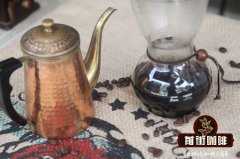How to eat Columbia Linglong coffee beans? One of the brands of Colombian coffee [Nalinglong]

Professional coffee knowledge exchange more coffee bean information please follow the coffee workshop (Wechat official account cafe_style)
How to eat Columbia Linglong coffee beans? The flavor and taste of Nalinglong, one of the brands of Colombian coffee?
The Nalinglong region of Colombia is located in the Andes at the junction of southeastern Colombia and Ecuador (the Andes, which begins in Chile and Argentina in the south, spans the north and south of Colombia and runs through the Nalinglong producing area). The natural geographical environment here: the tropical Pacific coast, the Amazon basin and the high Andes Mountains divide the Nalinglong producing area into three major topography, the first is the plains along the Pacific coast, and the second is the Amazon basin followed by the Andes mountains. Nalinglong coffee producing area is produced by 37 cities in Nalinglong province. Nalinglong Nari ñ o is located in the western corner of Colombia, which is the highest region in the country. Coffee grows on the alpine slopes facing the sea in the west. This area is the main supplier of Starbucks coffee. Only the coffee beans at the top of small farms have a chance to flow out. It has the reputation of the Holy Grail. Coffee goes directly to the selection of beans from very small farms in the Nalinglong region, which is independently produced for Europe.
Colombia is currently the third largest coffee producer in the world, after Brazil and Vietnam. It first planted commercial beans in the 1830s. In the 20th century, coffee accounted for the largest export crop. The mountainous terrain, coupled with a variety of tropical microclimate, provides an ideal planting environment. 75% of the total output is sold abroad, making it the most important source of foreign exchange earnings. Traditionally ripe coffee cherries are washed with water. In the past 15 years, the Coffee Research Center in Colombia has developed a system to protect the ecological environment, which requires little water treatment, which can reduce water pollution by 90% and reduce water consumption by 95%. This treatment can not only effectively maintain the ecology, but also improve the quality. Small farms sprinkle shelled coffee beans on the flat roof of their homes and bask in the sun. Colombia has a good climate and a large temperature difference, and from a regional point of view, it produces almost all the year round. The main harvest time is from October of each year to February of the following year, and November and December are harvest periods. The main varieties include Kaddura Caturra, Columbia Colombia, Tibica Tipica, Bourbon Bourbon, Elephant Bean Maragogype, and Tabi. Farms and cooperatives across the country, big or small, are distributed in more than 500000 towns and 14 major coffee producing areas-including Nalinglong Nari ñ o, Cauca of Cauca, Meta of Meta, Huila of Uila, Tolima of Tolima, Quindio of Kindio, Caldas of Caldas, Risaralda of Lisalda. Antioquia in Antioquia, Valle in Valley, Cundinamarca in Cundinamarca, Boyac á in Boyaca, Santander in Santander and Norte de Santander in North Santander. A total of 2 million Colombians depend on coffee cultivation for a living, contributing 12.5 per cent to local agricultural gross domestic product (GDP).
The Nalinglong producing area is near the equator at latitude 0 ℃. It receives almost the same number of sunshine hours every day throughout the year, with an average sunshine time of 1666 hours per year. At the same time, the location and geographical environment of the producing area, the average annual temperature suitable for coffee growth, the stable temperature change in the morning and evening and the annual rainfall make the coffee trees with rich soil organic matter in Nalinglong producing area can also thrive at very high altitude. it has a significant effect on the flavor and aroma of coffee. Colombian coffee is classified mainly according to the size of raw beans. 16Mur18 is called Supremo,14--16 for Excelso, and less than 14 is divided into Usual Good Quality. This batch belongs to Excelso, but the size of coffee particles is not the only standard that determines the quality of coffee. Colombian coffee is always popular for its well-balanced taste and bright and active acidity, while coffee from Nalinglong is famous for its strong aroma and sweetness.
Farmer Farm owner: different small farmers around Smallholder farmers from Alto del Obispo Farm
Region producing area: Nari ñ o Na Linglong
Country countries: Colombia Colombia
Altitude altitude: 1750 m
Certification certification: None none
Coffee Characteristics: coffee characteristics
Variety varieties: Caturra, Colombia traditional Colombian Kaddura
Processing System treatment: Fully Washed and dried on patio is fully washed and dried on the patio.
Flowering period flowering period: September-December September to December
Harvest period harvest time: March-July March to July
Appearance appearance: 18 eyes
Top Jury Descriptions judge's comment: the baking degree measured by the cup for 60 seconds at the beginning of the first explosion (Cinnamon)
Aroma aroma / flavor flavor: Sesame, peanut, spice, perfume, nectar, sugar cane, chocolate, honey tea
Acid: mint, lemon, lime
Complex complexity and other other: clean, refreshing, meticulous, elegant, balanced, mint cool breeze, cool full of honey tea, mellow and smooth taste, a strong fruit aroma and sweet fruit, if you like shallow baking, you can taste her bright acidity, fruit and sweetness.
Qianjie recommended cooking:
Filter cup: Hario V60
Water temperature: 90 degrees
Degree of grinding: small Fuji 3.5
Cooking methods: the ratio of water to powder is 1:15, 15g powder, the first injection of 25g water, 25 s steaming, the second injection to 120g water cut off, waiting for the powder bed water to half and then water injection, slow water injection until 225g water, extraction time about 2:00
Analysis: using three-stage brewing to clarify the flavor of the front, middle and back of the coffee. Because the V60 has many ribs and the drainage speed is fast, it can prolong the extraction time when the water is cut off.
Important Notice :
前街咖啡 FrontStreet Coffee has moved to new addredd:
FrontStreet Coffee Address: 315,Donghua East Road,GuangZhou
Tel:020 38364473
- Prev

Salvador Santa Teresa Manor Hot Springs Coffee Bean Introduction_How about Salvador Coffee Bean
Professional coffee knowledge exchange More coffee bean information Please pay attention to coffee workshop (Weixin Official Accounts cafe_style) always want to buy a globe larger, floor to the window to make a cup of coffee, go around it to find out where this brown liquid comes from on earth In the past two years, I have often used hot spring beans from Santa Teresa Manor in El Salvador, perhaps fascinated by coffee
- Next

What is the flavor of Salvadoran coffee? introduction to the flavor characteristics of El Salvador Parkmara coffee beans
Professional coffee knowledge exchange more coffee bean information please follow the coffee workshop (Wechat official account cafe_style) Salvadoran Parkmara coffee flavor taste characteristics: mild taste, good texture. El Salvador, located in the northwest of Central America and bordered by the Pacific Ocean to the south, is one of the birthplaces of the ancient Mayan civilization. Its nearby volcanoes, plateaus, lakes and seashore along the Pacific coast
Related
- Detailed explanation of Jadeite planting Land in Panamanian Jadeite Manor introduction to the grading system of Jadeite competitive bidding, Red bid, Green bid and Rose Summer
- Story of Coffee planting in Brenka region of Costa Rica Stonehenge Manor anaerobic heavy honey treatment of flavor mouth
- What's on the barrel of Blue Mountain Coffee beans?
- Can American coffee also pull flowers? How to use hot American style to pull out a good-looking pattern?
- Can you make a cold extract with coffee beans? What is the right proportion for cold-extracted coffee formula?
- Indonesian PWN Gold Mandrine Coffee Origin Features Flavor How to Chong? Mandolin coffee is American.
- A brief introduction to the flavor characteristics of Brazilian yellow bourbon coffee beans
- What is the effect of different water quality on the flavor of cold-extracted coffee? What kind of water is best for brewing coffee?
- Why do you think of Rose Summer whenever you mention Panamanian coffee?
- Introduction to the characteristics of authentic blue mountain coffee bean producing areas? What is the CIB Coffee Authority in Jamaica?

